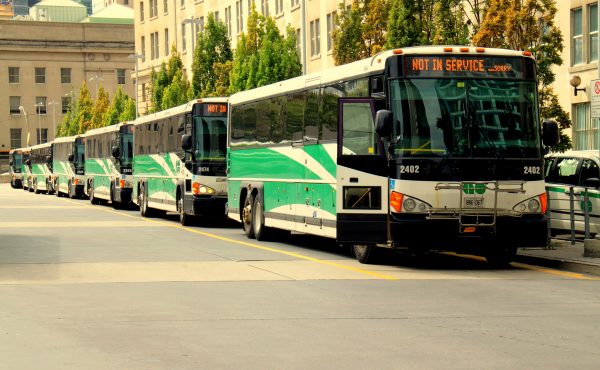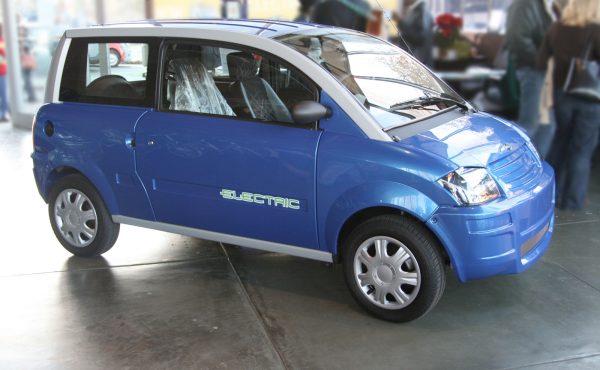
There is a great article published yesterday on Salon.com about the North American compulsion to build parking lots. It includes a look at “minimum parking requirement” legislation and how many American cities are starting to fight back against the gutting of their dense neighbourhoods for parking. Judging by the amount of comments on last week’s post about the Toronto Parking Authority’s decision to level the Matador for 20 parking spots at Dovercourt at College, people here are still a bit shell-shocked that this is happening in Toronto — with the local councillor’s support — a place we thought knew better. Some excerpts from the article:
To Donald Shoup, a professor of urban planning at UCLA, parking requirements are a bane of the country. “Parking requirements create great harm: they subsidize cars, distort transportation choices, warp urban form, increase housing costs, burden low income households, debase urban design, damage the economy, and degrade the environment,” he writes in his book, “The High Cost of Free Parking.”
—
It’s a self-perpetuating cycle. As parking lots proliferate, they decrease density and increase sprawl. In 1961, when the city of Oakland, Calif., started requiring apartments to have one parking space per apartment, housing costs per apartment increased by 18 percent, and urban density declined by 30 percent. It’s a pattern that’s spread across the country.
In cities, the parking lots themselves are black holes in the urban fabric, making city streets less walkable. One landscape architect compares them to “cavities” in the cityscape. Downtown Albuquerque, N.M., now devotes more land to parking than all other land uses combined. Half of downtown Buffalo, N.Y., is devoted to parking. And one study of Olympia, Wash., found that parking and driveways occupied twice as much land as the buildings that they served.
Read the rest — it goes on to list the various environmental problems associated with parking lots, and the link between more parking leading to more cars leading to more parking leading to…(Dovercourt?)
Thanks to jeffreygeoffrey for pointing us to the article.




4 comments
There is a key difference between Toronto and the American cities that the article refers to: Toronto has virtually no free parking in its core. All private and municipal lots charge significant money to park, which is as it should be, when viable transit options are available (where they often are not in the U.S.). Trying to implement a no parking model in Toronto would be risky; businesses and potential residents still want to know that some parking is available, even if costly, because they know that there are always some people, especially those with money, who just won’t get out of their cars no matter what. Few want to be quite that off the grid, so to speak. Even in London, England, the congestion pricing model was meant to make drivers pay more, and thereby manage demand, not restrict their access. So, yes, free abundant parking is bad, but I fear no parking at all (which the author(s) appears to be advocating) would be worse.
Just to clarify: Shoup is not arguing for no parking; instead, he advocates market-priced parking paid directly by user fees. Toronto is ahead of a lot of other cities in this regard, but outside the downtown core there are far too many parking spaces that are free or underpriced. I suspect that even in the downtown core, some of the municipally owned spaces are underpriced.
The big message from Shoup’s book is that free or underpriced parking is an enormous, hidden subsidy for car transportation. We have ignored this subsidy for over half a century but are finally waking up to it.
The implication of this is that virtually every time somebody has advocated making an investment in the transport system to benefit cars, they are ignoring a massive cost that is inherent in building any such system–that of parking. This is particularly important when you compare the costs of roads and highways versus transit.
A road network for cars is no good without parking at every point along it where people need to stop, whereas transit does not require any parking, except perhaps for a few commuter lots. The per-space cost of building parking can range from $5,000 where land is cheap to well over $100,000 where land is expensive. Multiply that by a few million spaces, and you have literally hundreds of billions of dollars invested in parking inherent in the cost of building a road network, yet unbelievably, no one has ever thought to calculate this as part of the cost of road building.
The province of Ontario is currently spending $3.4 billion widening expressways and other roads in the GTA and other urban or urbanizing areas. This will expand the capacity of the system ostensibly to accommodate a population increase of 3.7 million people over the next 25 years.
The province assumes that most of those people will use cars as their primary means of transportation and projects that this will result in an increase of 2 million vehicles. Each of those cars will need multiple parking spots–one at work, one at home, and several at shops and other destinations. If we assume that each additional car results in 5 additional parking spaces (an estimate based on the research cited in the Salon article), that means that we could be looking at upwards of $100 billion invested in parking for those vehicles over 25 years. This begins to give us an idea of the real cost of building a highway network–it goes far beyond the $3.4 billion dollars you spend every five years to widen roads.
Think about the transit systems we could have with that money which is instead being poured into parking stalls. (Building all of Transit City, plus the York U subway extension, would cost about $10 billion.) The high cost of free parking, indeed.
An excellent example of subsidized parking is the office I work in; its parking space is probably 3 times the office space where people work. The building is surrounded by a parking lot and there are no sidewalks to the closest road, not that it would matter since the road itself has no sidewalks and there is nowhere to walk to (can’t even get a friggin sandwich around here).
It was hell for management to accommodate me and my bike, but they don’t see a problem with all the parking surrounding the building. The company I work for used to be downtown Toronto near the subway, they moved to the suburbs because of cheap available space for parking and low business taxes, what management can’t see is that these low costs are not sustainable. Eventually they will be forced to move back downtown when the costs of low density become to high (this will happen if sprawl stops being subsidized), until then I will have to suffer and drag my sorry ass to work into the suburbs (which to me is as close to hell as I’ll ever be). I gotta find me another job…
Generally, city bylaws require that a minimum amount of parking be provided for any new building or business. The amount of parking depends on the zone. (Of course there is no maximum amount of parking that can be built). It’s a real pain for architects who often have to plan buildings around the parking. In Ottawa, if a business doesn’t or cannot provide the parking space, they have to pay a large sum in lieu of parking. Wouldn’t it be great if there was at least a maximum amount of parking to go along with the minimums?
There’s an architecture firm in New York called Lewis-Tsurumaki-Lewis that did an interesting tongue-in-cheek plan for a building in which they play with these required parking amounts. It’s a giant parking tower containing different kinds of space (commercial, residential, hotel, etc.). Since they designed the building for hydrogen-fuel celled cars (byproduct = water), the parking is dispered throughout the building, on every floor. The amount of parking on each floor depends on the amount required for that particular kind of zone. It’s hilarious and it illustrates the absurdity of those parking requirements. You can take a look at the project on their website below:
http://www.ltlarchitects.com/pages/portfolio/speculations/parktower.html